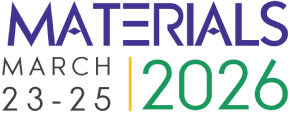Title : Detection of defects in CFRP composites by optical thermography methods
Abstract:
CFRP (Carbon Fiber Reinforced Plastic) composites are increasingly used in a variety of applications. Non-destructive testing methods are used for evaluating their condition both as a finished product and during their use. Damage that may occur in these types of composites includes air bubbles, non-uniform arrangement of fibers, regions of fibers not saturated with resin, delamination, and micro-cracks. Various methods of non-destructive testing are used to detect defects in such structures among the most effective of which are infrared thermography methods, the most common being optical heating with various types of lamps and the method of optical lock-in. Pulsed thermography is one of active IR techniques in which a surface of tested material is stimulated by a short heat pulse and the thermal response of the material is analysed. Flash thermography is used when the specimen is stimulated using a short energy pulse. The response contains information about subsurface material defects. After the heat pulse the temperature decrease rate is different on surface over defect in comparison to that over the sound material. In lock-in thermography, an amplitude modulated heat wave is applied to the inspected specimen in steady state. This paper seeks to compare the results obtained from pulsed and flash thermography with results from using optical lock-in thermography. The paper presents selected results of defect detection in a multilayer CFRP composite structure. The tests were carried out on a sample consisting of three plates made of CFRP connected with resin, in which the inner middle layer is made of four non-adherent elements.
Audience take away:
The presentation will allow: choosing the most effective non-destructive testing method for CFRP composites, determining the limitations of the described methods, and improving the results obtained with these methods.



